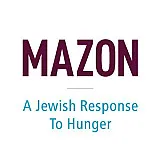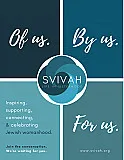The Three Pieces of Matzoh

There are three pieces of matzoh stacked on the table. The top matzoh is for the usual blessing over bread, the HaMotzi. The bottom matzoh is for the korech sandwich made with matzoh, maror, and charoset. We break the middle matzoh in two to represent suffering. The leader will wrap up the larger of the broken pieces and hide it. This piece is called the "afikomen," literally “dessert” in Greek. After dinner, the guests have to hunt for the afikomen and trade it for a prize.
The matzot are symbolic of the three castes of Jews: Priests, Levites, and Israelites. On a practical level, three matzot are needed so that when we break the middle matzah, we are still left with two whole ones to pronounce the HaMotzi blessing.
We eat matzoh in memory of the quick flight of our ancestors from Egypt. As slaves, when the word of their freedom came, they took whatever dough they had and ran with it before it had the chance to rise, leaving it looking something like matzoh.
One story about why we save the middle matzoh goes like this: When the Jewish people were fleeing Egypt and Pharaoh, they put three pieces of matzoh on their backs as they fled. The matzoh pressed against their backs got too sweaty and soggy to be good, and the matzoh on the top was burnt by the hot Sinai desert sun, but the middle one was perfectly cooked. Although the Jewish people ate all of the matzoh, good and bad, they always saved the best piece -- the broken middle piece -- for last.
The broken piece of matzoh represents many things. First, it is an example of the price of freedom. We recognize that freedom does not always come easily and is often fragmented in its early stages. However, even what is created from broken pieces can be a "dessert" to others.
Secondly, the broken matzoh can serve as a lesson to us as individuals, proving we don't have to be "perfect" to be valuable to others around us -- sometimes the best we've got is just what someone else needs.
Lastly, when we offer the matzoh, saying “This is the bread of poverty and affliction; let all who are hungry come and eat,” the broken matzoh reminds us of the spirit of generosity. It contradicts the message of our society that suggests we shouldn't share what we have with others who have less. Those who practice tikkun (the act of repairing or healing the world) are those who proudly proclaim: "There is enough and we can afford to share."
[Leader: Uncover the three matzot on the tray. Take the middle matzoh and break it into two, one piece larger than the other. The larger piece is placed in the afikoman bag and set aside. The smaller piece is put back between the two matzot. Hold up all three pieces of matzoh (except for the afikoman).]
Leader: This is the bread of poverty and affliction that our ancestors ate in the land of Egypt. All who are hungry, come and eat; all who are needy, come and celebrate Passover with us. This year we are here; next year in the land of Israel. This year we are slaves; next year we will be free people.
[Leader: Set the matzoh down onto the tray.]
[Everyone: Pour your second cup of wine.]
Inspired to create
your own Haggadah?
Make your own Haggadah and share with other Seder lovers around the world
Have an idea
for a clip?
People like you bring their creativity to Haggadot.com when they share their ideas in a clip
Support Us
with your donation
Help us build moments of meaning and connection through
home-based Jewish rituals.
OUR TOP CONTRIBUTORS
Passover Guide
Hosting your first Passover Seder? Not sure what food to serve? Curious to
know more about the holiday? Explore our Passover 101 Guide for answers
to all of your questions.






















